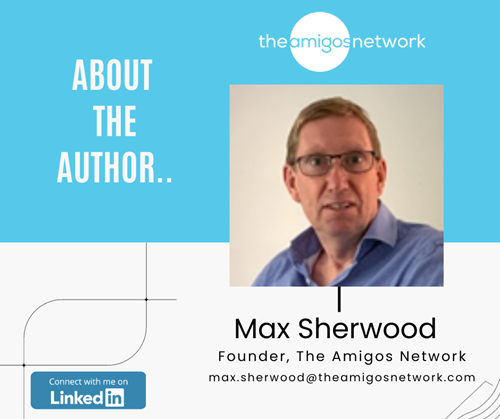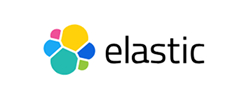Friday, March 01, 2024 by Shelley Hirst
We often hear that the rhythm of sales is governed by quarters, targets, and end-of-year pushes.
While sales may operate within this structured cadence, marketing has the opportunity to dance to a different beat. While sales sleep marketing can keep working - that's theory anyhow, given the opportunity our digital, automated "always-on" world offers.
Yet many resist taking full advantage of weekends, peak holiday periods and seasonal celebrations by actively slowing down activity during these periods. For example, in the UK, many 'write off' July, August and December and don't invest in these times. To frustrate this further, key in-person events scheduled in the 'normal' working week, become impacted further by outside forces such as industrial action.
Counting the days: Sales vs. Marketing
Sales Days: Sales teams traditionally operate based on fiscal quarters, with 90-day sprints towards targets. With an average of about 252 business days in a year, after deducting weekends and public holidays, sales teams are looking at roughly 63 days a quarter to hit their targets. These periods are often characterised by a beginning-of-quarter strategy alignment, a mid-quarter push, and an end-of-quarter scramble.
Marketing Days: Unlike sales, marketing is capable of being an ongoing endeavour that doesn't sleep. Every day offers an opportunity for brand engagement, lead nurturing, and customer touchpoints. Marketing's role shouldn't be simply to support sales in their 252-day sprint but to consistently pave the way for engagement 365 days a year.
The stop-start conundrum
Many businesses, driven by the urgency of sales targets, have inadvertently fallen into a 'stop-start' pattern. This sees them ramping up marketing efforts intensely at the start of a quarter, then pulling back resources as sales close deals, only to restart as a new quarter dawns. This cyclical approach can lead to:
Missed opportunities: Potential leads might be overlooked during 'off' periods.
- Inconsistent brand presence: The intermittent focus can lead to gaps in brand visibility and engagement.
- Resource inefficiency: Restarting campaigns or efforts can consume more resources than maintaining them.
Rethinking a quarterly focus
While quarterly targets are essential for tracking and motivation, it's crucial to recognise buyers don't work in those cycles. The value of consistent, daily marketing efforts by moving away from a solely quarterly-focused strategy, businesses will:
- Deepen customer relationships: Continuous engagement allows for deeper, more meaningful customer relationships.
- Increase lifetime value: With regular touchpoints, there's a higher chance of upselling or cross-selling to existing customers.
- Drive sustainable growth: Instead of peaks and troughs, businesses can aim for steady, sustainable growth.
Fortune favours the brave
We see this evidentially in our client's activity in that some of our best audience engagement figures occur at "certain times" over the weekend and in the holidays. As such, we think it's time to put it out there in the endeavour to disrupt and shift traditional thinking and move from cadence bursts to a more sustained strategy.
Logic says, that in doing so, businesses increase their opportunity to be in front of their audiences for an additional minimum of 113 days a year. Imagine all those extra soft-selling days multiplied across all the online distribution channels used!
The path towards continuous engagement
Managed efficiently the quarterly peaks and troughs can be smoothed out and sales become more efficient in the time spent following up leads. There should be no need to rely on single-click campaigns, which waste time cold calling.
In this way, the utopia of “low-hanging fruit” will become the norm for sales teams with the application of persistent and consistent marketing efforts.
That’s not to say it doesn’t present resource and budgetary challenges – especially when there’s a need to apply this strategy to build growth through channel partners. Still, unless it is addressed, misalignment will continue.
- Consistent lead nurturing: Marketing's daily efforts mean there's an opportunity to continually nurture potential leads. This ensures a steady stream of 'low-hanging fruit'—warm leads that are easier to convert, a boon for sales teams.
- Strengthened brand image: A continuous marketing presence ensures that the brand remains top-of-mind for potential customers, leading to increased trust and recognition.
- Predictable sales pipeline: Instead of the ebb and flow of leads, a consistent marketing approach can lead to a more predictable and steady sales pipeline.
- Resource optimisation: Continuous efforts can lead to better resource allocation, preventing the wastage associated with stop-start strategies.
In conclusion
Whether your demand generation programmes are to support direct or indirect sales teams, in the race towards quarterly targets it's easy to lose sight of the bigger picture. But by acknowledging the difference between sales days and marketing days and leveraging the continuous power of marketing, businesses have an incredible opportunity.
By shifting from intermittent bursts to a sustained strategy, they will ensure that growth isn't just a quarterly goal but a daily reality.

If this makes sense to you ......
Take a small step. Ask us to show you how Market Activation™ will help amplify your brand, identify buyers with purchasing intent and create better-informed sales conversations!
It can be a complete enabler for small/newly funded businesses or as a programme that's part of a wider demand generation strategy.
Vendors looking to support their partner channels in their demand-creation efforts find it particularly beneficial if they build it into their channel programmes.
Forward-thinking distributors wishing to offer value to vendors and partners by engaging and managing relationships directly with buyers are also creating interest.
And great news for the budget holders - depending on where you sit there are models some customers have adopted that have made it cost-neutral or revenue-positive at source.
If anything here sounds interesting and you'd like to explore it further, feel free to book time in our diary using the link below.
Frequently Asked Questions
Market Activation identifies in-market buyers (via intent data, behavioural signals) and immediately engages them with tailored outreach (nurture tracks, one-to-one advisor sessions, community invites).
Demand Engine: Targeted outreach (email, ads, sponsorships) that scores clicks → qualified leads → sales-ready appointments.
Performance Dashboard: Real-time visibility into open rates, CTOR, CPL and lead progression via our online sales portal.
Content Amplification: Thought leadership shared in The Amigos Network drives deeper engagement and social proof.
Peer Validation: Prospects get candid feedback from peers on your solutions, shortening the evaluation cycle.
Pipeline Catalysis: Warm introductions and referral paths within the community fuel high- intent conversations.
- Top-of-Funnel: Build credibility through community content and events.
- Mid-Funnel: Leverage peer case studies, expert Q&As, and live demos to answer deep technical questions.
- Bottom-of-Funnel: Invite high-intent members to advisory councils or private 1:1 sessions, often the final nudge before purchase.
- Interesting content: We originate, curate, and syndicate different types of content we know our audiences want to engage with and tell them it’s there.
- Sponsored content: We use sponsored content to drive engagement with individual brands.
- Promotion: We promote that content via multiple channels such as email, social media, YouTube, and so on.
- Identification: We ingest company-level engagement signals and combine it with known contacts that may be researching key topics.
- Segmentation: Members are bucketed by level of intent (high, medium, low) plus ICP fit and company size.
- Activation: High-intent members receive prioritised community invitations (events, focus groups, product deep-dives) to accelerate deals.
- Purchased data highlights who’s in-market.
- Community engagement reveals what questions they’re asking, so your nurture can be hyper-relevant.
- Result: A 2–3× lift in meeting acceptance and pipeline velocity vs. cold outreach alone.
- Marketing owns the nurture tracks, community invites, educational content, and event promos.
- Sales intervenes only at “high-intent + active community engagement” thresholds, with account-specific demos and peer introductions.
- Outcome: Fewer wasted calls and a higher win rate on truly qualified opportunities.
- Engagement Metrics: Community log-ins, event attendance, content downloads.
- Intent Conversion: % of intent-scored members who join private roundtables or request demos.
- Pipeline Velocity: Time from first community touch to opportunity creation.
- Revenue Impact: Contribution of community-sourced deals to overall bookings.
- Average Weekly Open Rate: 40%
- Average Weekly Click-to-Open Rate: 70%
- Average Cost-per-Lead: £45
- Minimum ROI: 500%
- Average Dwell Times: 1 minute 45 seconds




















